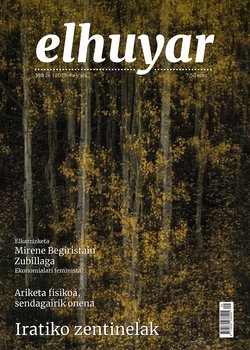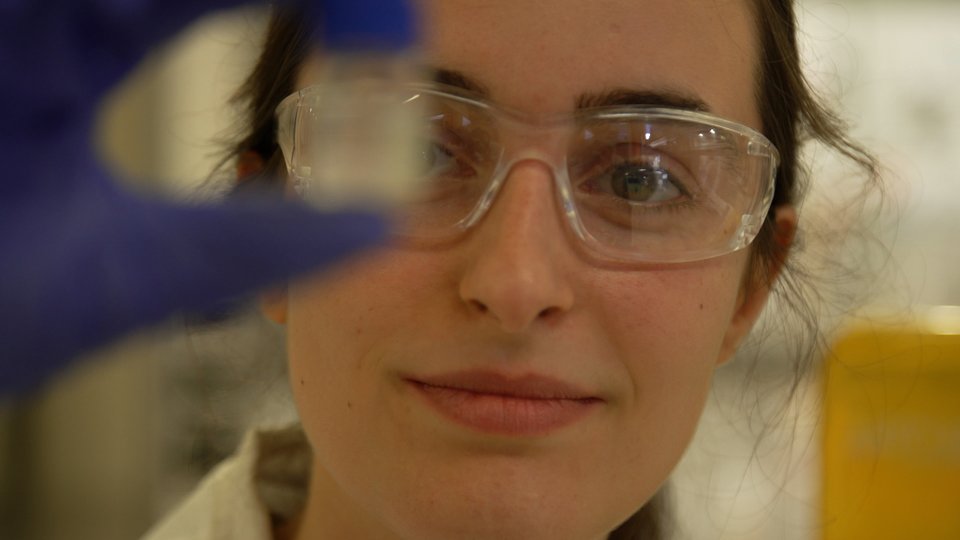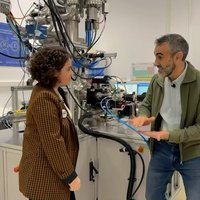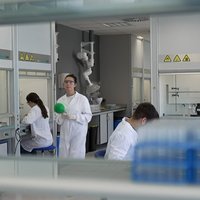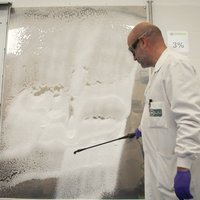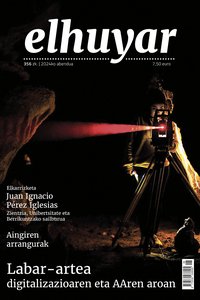Andrew Benson: "The chemistry and structure of photosynthesis are magical"
Together with Calvin, he explained one of the keys to the photosynthesis process, which is why he is known. But what work did they do exactly?
I was director of the laboratory studying photosynthesis at the University of Berkley, and Calvin had interest not only in photosynthesis, but in many other fields. It also had another medical research laboratory. He was especially interested in the separation of proteins, he intended to isolate and study the protein that gives Rh negative to the blood. This protein intended to study the cause of the possible blood incompatibility that occurred when the baby was born.
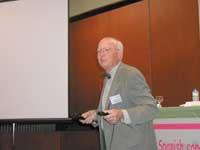
Therefore, although known for photosynthesis, Calvin also worked in other fields.
So it is. In addition to the investigations of the two laboratories cited, he was in charge of a large group of people who carried out research on human metabolism. He retired in 1985 and died at 89 in 1997.
What exactly was it?
My goal was to analyze the metabolic reactions that occur in the process of photosynthesis, both in the dark and in the light. Before I started it, it was thought that light was necessary for plants to internalize carbon dioxide from the atmosphere. The theories then point to a photochemical reaction between carbon dioxide and chlorophyll. The adsorption introduced carbon dioxide in the plant's metabolism. Therefore, the plant could only produce sugars with light.
Thanks to my research I demonstrated that this does not happen. During the day, the plant accumulates high energy reducing molecules and synthesizes sugars with this energy. I demonstrated that this last process can be done both in the light and in the dark. In the luminous phase of photosynthesis, reducing molecules and non-sugars are produced.
To demonstrate this, we experiment with algae and radioactive carbon dioxide. In addition, we saw that the reactions of the light and dark phase of photosynthesis could be analyzed separately.
Since you did these research, have you noticed any changes in the way you work in the laboratories?
Yes, of those experiments of 1942 many things have changed. Then it was necessary to be chemical to explain some facts or to find data, as well as to observe how reactions occurred. Now the machines and kits have replaced those we imagined in the head and saw in the trials.
As he said in his intervention, at present the paper chromatography methodology is undervalued.
In my opinion, the development of paper chromatography deserved the Nobel prize, but it did not. In my research, I took advantage of all the resources offered by paper chromatography to study radioisotopes and unknown compounds. Until then it had not been done.
English researchers who invented paper chromatography were not very good chemicals, but opened up new opportunities for everyone else. The current laboratories are full of very expensive and computerized devices. These tools provide very accurate and reliable analysis, but cannot find new truths.
Do you think there is currently something to discover about photosynthesis?

In recent years, many excellent researchers are working on it and have resolved the reactions that occur in the two ‘reaction centers’ that control the light phase. The chemistry and magic structure of these reaction centers. To find it they have been necessary four decades and a hard work of many people.
Now, most of the progress is based on genetics, especially on the development of structures and on the regulation of fertility. With genetics, much more abundant crops can be obtained, with which the population of the third world can be fed.
After conducting research on photosynthesis, in 1962 he traveled to the oceanographic institute Scripps de San Diego, where he worked until his retirement. What did you investigate at that time?
Of all. Formerly I had 13 people in my charge. Microbiologists, chemicals, everything. All of them first level researchers.
We carried out numerous studies and, among other things, we found wax in copepods. The wax is obtained by binding alcohols and fatty acids. With a chain of forty carbon the wax produced by bees is obtained and with a chain of twenty-two carbon a liquid unsaturated wax is obtained.
The copepods eat algae. Through the smell choose the algae they like. The smell sensors are found in the feet and through them, moving the water around them, choose the right food. In addition, if they find something they don't like, they abandon it.
If copepods are fed well, 70% of the body is covered by a large bag of wax. This wax is a liquid, unsaturated wax, which I mentioned above. They transform the wax they take from the algae to make it much more liquid; they reduce the alcohol of the wax.
Copepods consume algae constantly. This occurs especially in spring, when the ice of glaciers melts and the water is filled with diatoms. When they are sufficiently eaten and waxed, they go to the bottom and there they become adults. Then they look for a couple and lay eggs for the following year. In the following spring, the algae return to the upper layers of water at the time of their growth. And at the time, when the copepods are very thick, salmon appears, which is fed by a lot of copepods to fatten it. It is a very nice food chain.
Fortunately, we had no problems financing this research and so we were able to do it.
However, research on photosynthesis did not end there, did it?
No, after many years of working with copepods, we began to study the properties of methanol.
Research began in 1974. We work with the radioactive Methanol. With the application of methanol to algae we saw that the metabolism accelerated, making all processes faster. So we saw that plants like methanol.
My friend Dr. Arthur Nonomura planted cotton on a plot of a thousand acres and, with methanol, received the harvest a month before normal. In addition, he realized that the plants of this plot were also watching the sun in the afternoon, something that did not occur in other lands.
Usually in the afternoon the photosynthesis of the plants decreases considerably, but if methanol is administered this does not occur. The plant continues to work without ceasing, so the harvest is obtained much earlier.
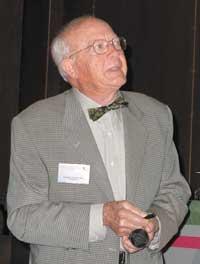
Dr. Arthur Nonomura and I have patents on the use of methanol and its derivatives; patents on products that serve to improve crops of corn, rapeseed and other plants.
What implications can these investigations have in the future?
I think this kind of discoveries will serve to make more productive crops around the world. However, the most important idea is that governments do not submit to religious groups, since they have led man to so many wars. The Earth cannot withstand the constant waste of raw materials and human force that generates a war.
Today, with all we know about the origin and life of the universe, we should have fewer incentives to accept beliefs that have lasted a long time. However, among them are some lessons of how society should act. I think it would have to be maintained and developed.
Andrew Benson In the 1940s he was responsible for the Caltech Chemistry Department (California Institute of Technology) with Sam Ruben. At the end of the decade, Calvin invited him to travel to Berkley to complete the laboratory that studied photosynthesis and be his director. There he analyzed the process of fixing carbon dioxide by using the C-14. Using radioactive carbon, he clarified the dark phase reactions, key to photosynthesis, identifying and describing the reactions necessary to transform carbon dioxide into sugars and mediating molecules. In 1958 the entire chain of reactions was illuminated and in 1961 Calvin received the Nobel Prize in Chemistry for this revolutionary discovery. In 1962 he joined the oceanographic institute Scripps, where he remained until his retirement. Currently, at the age of 85, he is still teaching lectures and emeritus professor at the institute. |
Buletina
Bidali zure helbide elektronikoa eta jaso asteroko buletina zure sarrera-ontzian


